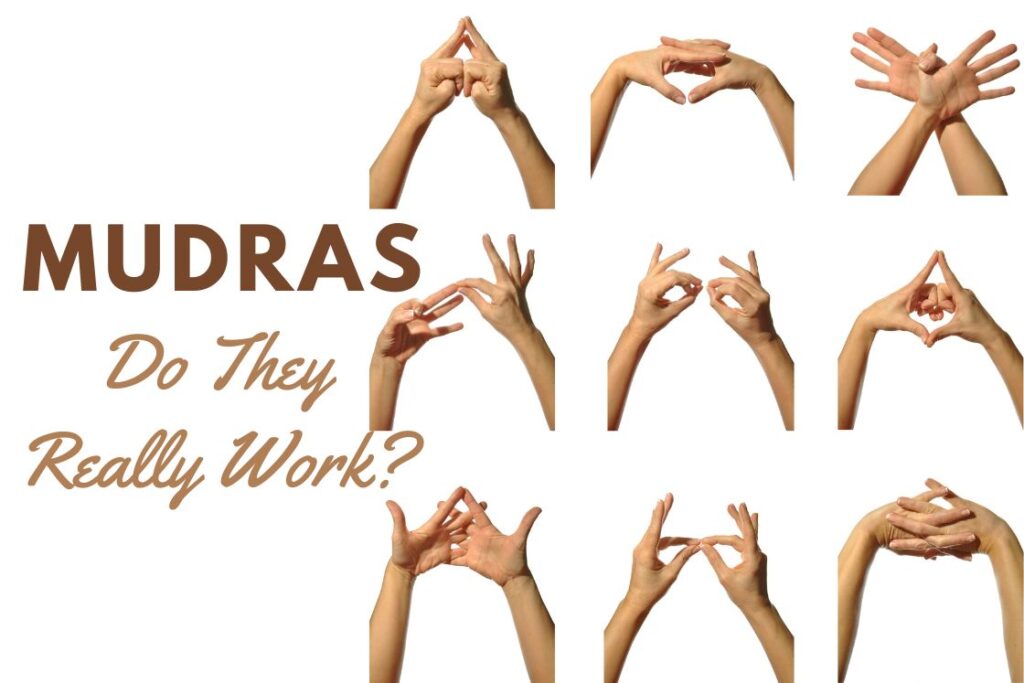
Mudras are symbolic gestures often associated with various pranayama and meditation practices. These symbolic gestures are believed to hold the power to influence not only our physical well-being but also our mental and spiritual states. The question that often arises is whether mudras really work or if they are merely another facet of pseudoscience!
In our quest for answers, we delve into the realm of mudras, seeking to uncover the essence of their efficacy. While anecdotal accounts and traditional wisdom vouch for mudras benefits, we also turn to the scientific community for validation. As we explore the scientific research on the effects of mudras on health and well-being, we aim to discern the truth behind their healing potential.
in this article, we will not only cover the underlying question of Mudras effectiveness but also
- Origins and traditional perspectives on Mudras.
- Scientific research supports their effectiveness.
- Factors influencing Mudra effectiveness.
- When to rely on Mudras as a complementary practice.
- Situations when it’s advisable not to rely solely on Mudras.
- Myriad benefits for physical, mental, and emotional well-being.
- Practical guidance for incorporating Mudras into your practice.
- Personal experiences and transformative testimonials.
- A balanced conclusion summarizing key insights.
What Are Mudras?
Mudras, the ancient art of hand gestures, hold a profound place in the world of yoga and meditation. These intricate hand positions are far more than mere symbols or rituals; they are a gateway to the subtle energies that flow within us.
To truly understand the effectiveness of Mudras, it’s essential to grasp what they are and the role they play in the practice of yoga.
Defining Mudras
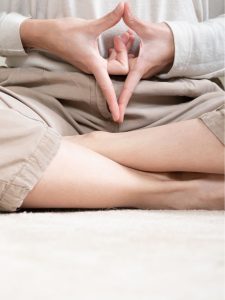
Mudras can be defined as symbolic or ritualistic gestures, primarily performed with the hands and fingers.
The word “Mudra” itself originates from the Sanskrit language, where “mud” means joy or pleasure, and “ra” means to produce. Together, they signify gestures that bring about joy, contentment, and various positive states of mind and body.
Origins and Significance
Mudras have a rich history deeply rooted in both Hinduism and Buddhism. They are prominently featured in ancient texts, sculptures, and paintings, showcasing their significance in spiritual and philosophical traditions. These hand gestures are not arbitrary but are carefully designed to convey specific meanings and intentions.
Symbolism in Mudras
Mudras are often associated with symbolism (just like other symbols of yoga). The positioning of fingers, thumbs, and the joining of hands create a visual language that communicates various aspects of human consciousness. For example, the common “Namaste” gesture, where the palms are joined together in front of the heart, signifies respect and unity, balances the right and left hemisphere of the brain. Namaste is known as “Anjali Mudra” in yoga.
Purpose and Function
The primary purpose of Mudras is to influence the flow of energy (or as we call it Prana in yogic terminology) within the body and mind. It’s believed that each finger represents one of the five elements:
- Earth element (Prithvi):
- Corresponds to the solid structures in the body, such as bones and tissues.
- Represents stability, strength, and groundedness.
- Water element (Jal):
- Corresponds to bodily fluids, including blood, lymph, and digestive juices.
- Represents flow, adaptability, and emotional balance.
- Fire element (Agni):
- Corresponds to metabolic processes, digestion, and body heat.
- Represents transformation, energy, and passion.
- Air element (Vayu):
- Corresponds to the respiratory system and circulation.
- Represents movement, communication, and flexibility.
- Space element (Akasha):
- Corresponds to the empty spaces within the body, like the cavities.
- Represents expansion, connection, and consciousness.
By combining these elements through Mudras, practitioners aim to balance and harmonize their internal energies, leading to a sense of well-being and heightened awareness.
Commonly Practiced Mudras
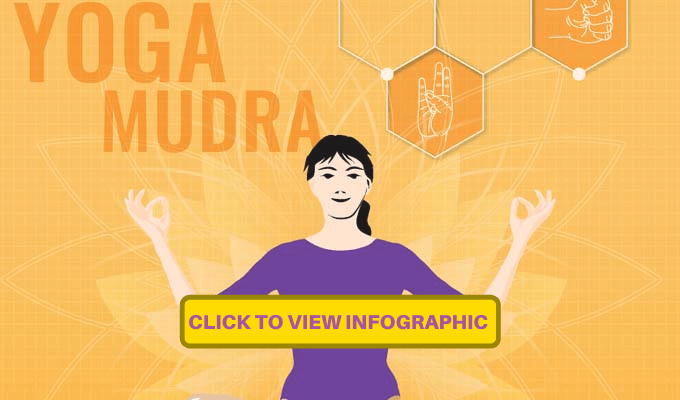
There is a wide array of Mudras, each designed to achieve specific outcomes. Some of the most commonly practised Mudras include:
- Anjali Mudra (Namaste): The gesture of joining the palms together at the heart center, symbolizing respect and gratitude.
- Gyan Mudra: The tip of the index finger touches the tip of the thumb, forming a circle, which is believed to enhance knowledge and wisdom.
- Prithvi Mudra: The tip of the ring finger touches the tip of the thumb, representing the earth element and promoting stability and strength.
- Apana Mudra: The tips of the thumb, middle finger, and ring finger touch, while the index and little fingers remain extended. This Mudra is associated with detoxification and elimination.
- Dhyana Mudra: Hands are placed in the lap, right hand over the left, with thumbs gently touching, facilitating deep meditation and concentration.
The Traditional Perspective
The traditional perspective on Mudras is deeply rooted in centuries-old wisdom and the spiritual and philosophical traditions of yoga and meditation. Before we delve into the scientific aspects of Mudras, it’s essential to understand how they have been viewed and utilized in these traditional contexts.
Ancient Wisdom and Historical Significance
Mudras have been an integral part of yoga, meditation, and various spiritual practices for millennia. Their origins can be traced back to ancient texts and teachings, including the Vedas and Upanishads. In these scriptures, Mudras are described as powerful tools for connecting with higher states of consciousness and self-realization.
Holistic Approach to Well-Being
One of the fundamental principles of traditional Mudra practice is the belief in the interconnectedness of the mind, body, and spirit. Mudras are seen as a means to harness and balance the subtle energies within the body, known as “prana” or life force. By doing so, practitioners aim to achieve physical health, mental clarity, emotional stability, and spiritual growth.
Specific Mudras for Specific Goals
Traditional wisdom dictates that different Mudras are used for different purposes. For instance:
- Apana Mudra may be practised to aid in digestion and elimination.
- Chin Mudra (the tip of the thumb touching the tip of the index finger) is used during meditation to enhance concentration.
- Prana Mudra (the tips of the ring finger and little finger touching the tip of the thumb) is believed to boost vitality and energy.
Balancing the Elements
A fundamental concept in traditional Mudra practice is the association of fingers with the five elements – earth, water, fire, air, and ether. Mudras are seen as a way to balance these elements within the body, promoting harmony and well-being. For example, the Surya Mudra (the tip of the ring finger pressing the base of the thumb) is thought to balance the fire element, fostering warmth and energy.
The Role of Intention and Meditation
In the traditional perspective, the effectiveness of Mudras is not solely dependent on the physical gestures but also on the intention and inner state of the practitioner. Meditation often accompanies Mudra practice, allowing individuals to align their mental focus with the intended outcome of the Mudra.
Understanding this traditional viewpoint provides a holistic foundation for exploring the potential benefits of Mudras.
Now we will dive into scientific research to examine whether Mudras align with these ancient beliefs and whether they can be considered effective tools in the modern world.
Scientific Research on Mudras
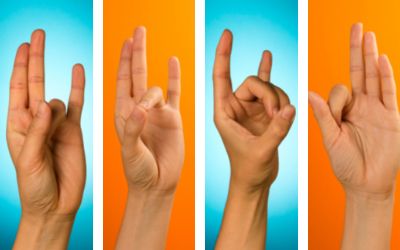
While the traditional perspective on Mudras is rich in history and spiritual significance, the modern world places a premium on scientific validation.
So question arises; does mudra really work? And if yes, are they scientifically proven?
Mudras have shown effectiveness in various ways. Scientific studies support their potential benefits, and there are specific cases where Mudras, such as the Prana Mudra, have been reported to help reduce stress and promote relaxation. While results may vary from person to person, scientific research and personal experiences suggest that Mudras can be valuable tools for enhancing well-being.
In this section, we’ll delve into the scientific studies that have investigated the effectiveness of Mudras.
Evidence-Based Inquiry
The scientific exploration of Mudras involves rigorous inquiry and empirical investigation. Researchers have conducted studies to examine the physiological, psychological, and therapeutic impacts of Mudra practices. Many of these studies can be found in reputable sources like PubMed, NCBI, and NLM NIH Gov.
Physiological Effects
- Neurological Changes: Some studies have suggested that specific Mudras may influence brain activity [1, 2]. For example, the practice of Gyan Mudra has been associated with changes in brainwave patterns, potentially indicating increased cognitive function.
- Breathing and Heart Rate: Research has shown [3, 4] that certain Mudras when combined with controlled breathing techniques, can lead to altered respiratory rates and heart rate variability. This suggests a potential role in stress reduction and relaxation.
Psychological Benefits
- Stress Reduction: Several studies have explored the impact of Mudra practice on stress management [5]. Findings suggest that Mudras may help reduce stress and anxiety levels, potentially through their calming effect on the nervous system.
- Enhanced Concentration: The use of Mudras during meditation has been associated with improved focus and concentration. Practitioners report heightened mental clarity and a deeper state of meditation.
Therapeutic Applications
- Pain Management: Some research has investigated the use of Mudras as a complementary approach to pain management. While not a standalone treatment, they may offer relief in conjunction with other therapies.
- Emotional Well-Being: Mudras are believed to influence emotions, and studies have explored their role in emotional regulation. Positive shifts in mood and emotional balance have been reported by individuals practising specific Mudras.
Scientific studies on Mudras have also considered the factors that may influence their effectiveness. These include the duration and consistency of practice, individual variations, and the alignment of Mudras with specific intentions and goals.
While scientific research on Mudras continues to evolve, it’s important to note that the effectiveness of Mudras may vary from person to person. Additionally, Mudras are often seen as a complementary practice rather than a standalone solution for health and well-being.
Factors Influencing the Effectiveness of Mudras
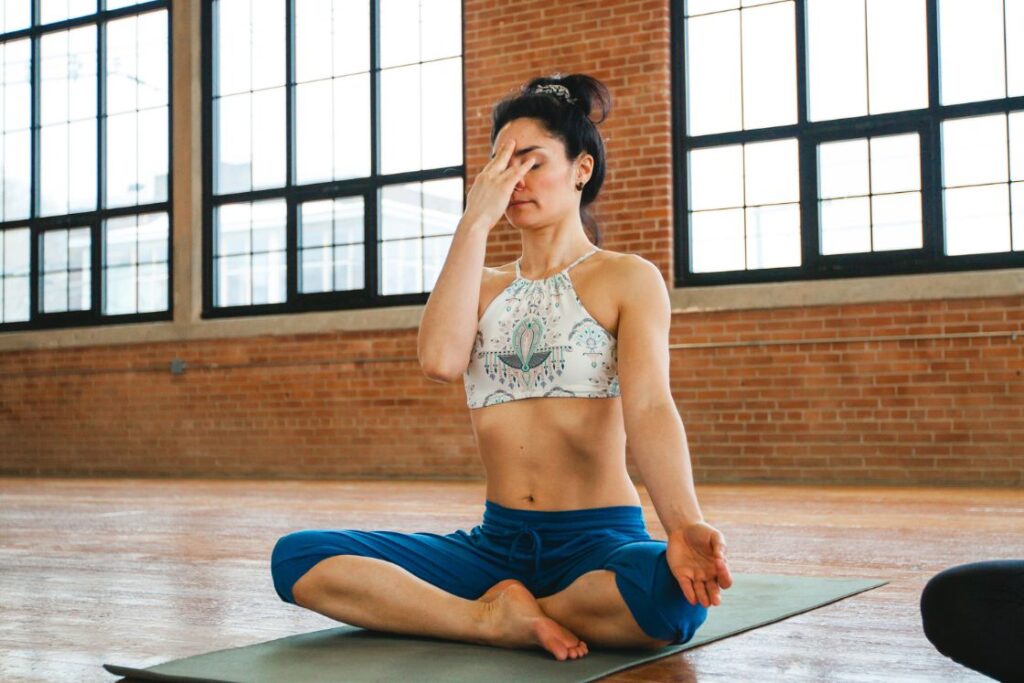
The effectiveness of Mudras, like many practices, can be influenced by various factors. Understanding these factors is crucial to harness the full potential of Mudra practice and achieve the desired outcomes. Let’s explore the key elements that can impact how effective Mudras are in enhancing well-being.
1. Intention and Mindfulness
The power of intention plays a significant role in Mudra practice. Before performing a Mudra, setting a clear and positive intention can amplify its effects. Mindfulness during practice, focusing on the present moment and the intended outcome, can enhance the Mudra’s effectiveness.
2. Duration and Consistency
Consistency in Mudra practice is essential. While some individuals may experience immediate effects, for others, it may take time. Practicing Mudras regularly and with patience is more likely to yield noticeable results. The duration of practice can also vary depending on the Mudra’s purpose but in general 4 weeks of regular practice is suggested when practising Mudras for healing and some acute health conditions.
3. Individual Differences
Every individual is unique, and what works for one person may not work the same way for another. Factors such as body constitution, energy levels, health condition and personal sensitivities can influence how a Mudra affects an individual. It’s important to adapt Mudra practice to suit one’s own needs and experiences.
4. Alignment with Goals
Mudras are often chosen based on specific goals. To maximize their effectiveness, it’s crucial to select Mudras that align with your intentions. For instance, if you’re seeking relaxation and stress reduction, choosing a Mudra known for its calming properties, like the Shuni Mudra, may be more appropriate.
5. Mind-Body Connection
Mudras work on the principle of the mind-body connection. Being in the right mental and emotional state while performing a Mudra can amplify its effects. Cultivating a sense of receptivity and openness can enhance the flow of energy and optimize the Mudra’s impact.
6. Expert Guidance
Learning Mudras from a qualified yoga instructor or practitioner can make a significant difference. Proper technique and guidance ensure that Mudras are performed correctly, increasing their effectiveness and minimizing the risk of injury or discomfort.
7. Complementary Practices
Mudras are often most effective when integrated into a holistic approach to well-being. Combining Mudra practice with other yoga techniques, such as asanas (postures), pranayama (breathing exercises), and meditation, can create a synergistic effect that enhances overall health and balance.
8. Adaptation to Needs
Mudras can be adaptable to individual needs. As circumstances change, one can modify Mudra practice to address specific challenges or goals. This adaptability makes Mudras a versatile tool in one’s wellness toolkit.
Understanding these factors empowers individuals to make informed choices when incorporating Mudras into their daily routines. While Mudras offer potential benefits, their effectiveness depends on how they are practiced and how well they align with personal intentions and needs.
When to Rely on Mudras?
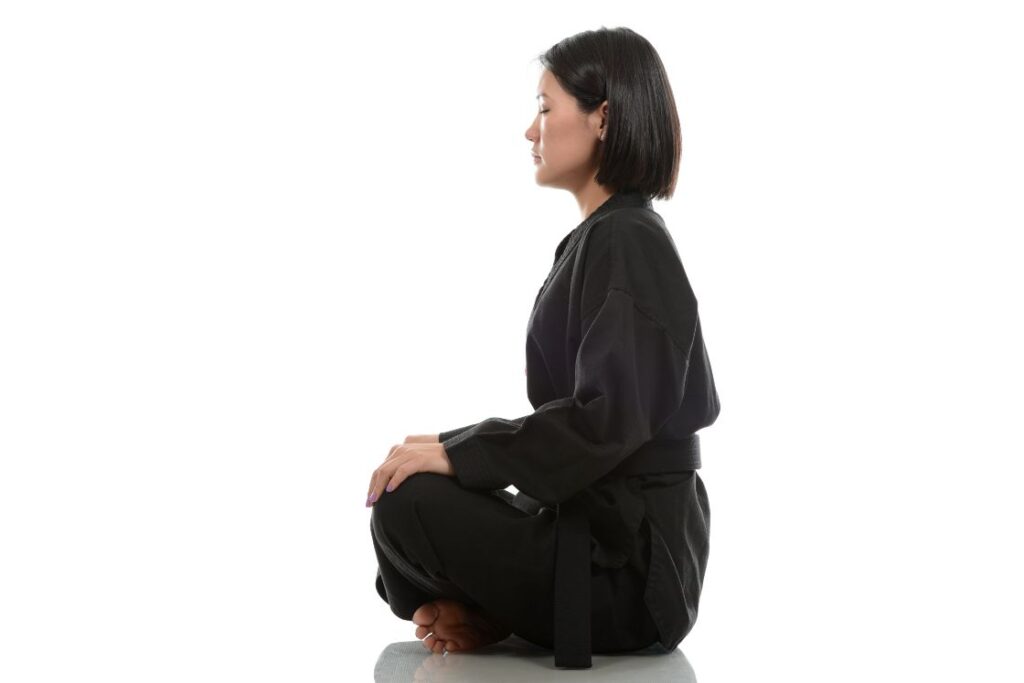
Mudras can be powerful tools for enhancing various aspects of well-being, but like any practice, they are most effective when used purposefully and mindfully. Here, we explore the situations and scenarios in which relying on Mudras can be highly beneficial:
1. Stress Management
When to Use Mudras: Mudras can be particularly useful during stressful times. Practices like the Prana Mudra and Apana Mudra, combined with deep breathing, can help calm the nervous system and reduce stress and anxiety.
2. Enhancing Concentration
When to Use Mudras: When you need to improve focus and concentration, incorporating Mudras like the Gyan Mudra or Dhyana Mudra into your meditation or study routine can enhance mental clarity.
3. Balancing Emotions
When to Use Mudras: Mudras can assist in regulating emotions. If you’re experiencing emotional fluctuations, Mudras such as the Surya Mudra and Jnana Mudra may help bring emotional stability.
4. Aiding in Meditation
When to Use Mudras: Mudras can deepen meditation experiences. Practicing Mudras like the Dhyana Mudra or Chin Mudra during meditation sessions can facilitate a meditative state and inner calm.
5. Promoting Physical Health
When to Use Mudras: Mudras can be incorporated into physical health routines. For specific health goals, like improving digestion with the Apana Mudra or enhancing vitality with the Prana Mudra, Mudras can be a complementary practice.
6. Seeking Holistic Balance
When to Use Mudras: If you’re looking for a holistic approach to well-being that integrates mind, body, and spirit, Mudras align well with this goal. They promote balance and harmony on multiple levels.
7. As Complementary Practices
When to Use Mudras: Mudras work effectively when integrated with other yoga practices, such as asanas (postures), pranayama (breathing exercises), and meditation. They enhance the overall benefits of a yoga routine.
8. Personal Development
When to Use Mudras: Mudras can support personal growth and self-awareness. Practicing Mudras mindfully can foster a deeper connection with oneself and aid in personal development journeys.
In these situations, relying on Mudras as part of your wellness toolkit can be highly beneficial. However, it’s essential to approach Mudra practice with mindfulness and intention, understanding that they are complementary practices and not substitutes for professional medical or psychological treatment.
When Not to Rely on Mudras
While Mudras can offer various benefits, there are situations and conditions when relying solely on Mudras may not be advisable. It’s essential to consider other factors and practices for holistic well-being. Here, we explore scenarios when caution should be exercised:
1. Serious Medical Conditions
When Not to Rely on Mudras: If you have a severe medical condition or are experiencing a medical emergency, Mudras should not replace professional medical treatment. In such cases, consult a healthcare provider for appropriate medical care and follow their recommendations.
2. Mental Health Concerns
When Not to Rely on Mudras: Mudras can complement mental health practices, but they are not a substitute for mental health treatment. If you are dealing with severe mental health issues, such as depression, anxiety disorders, or psychosis, consult a mental health professional for evaluation and treatment.
3. Physical Injuries or Pain
When Not to Rely on Mudras: Mudras should not be used as a primary treatment for physical injuries or chronic pain conditions. Seek medical attention and follow prescribed therapies or exercises to address physical health issues effectively.
4. Isolation from Professional Guidance
When Not to Rely on Mudras: It’s crucial to learn and practice Mudras under the guidance of an experienced yoga instructor or practitioner. Attempting complex Mudras without proper instruction can lead to discomfort or injury. If you lack access to expert guidance, exercise caution and start with simple Mudras.
5. Allergic Reactions or Sensitivities
When Not to Rely on Mudras: Some individuals may be allergic or sensitive to specific substances that are part of traditional Mudra practices, such as using certain powders or materials. If you have known allergies or sensitivities, avoid any Mudra practice that involves these substances.
6. Personal Discomfort
When Not to Rely on Mudras: If you experience discomfort, pain, or adverse reactions while practicing a Mudra, discontinue the practice immediately. Mudras should not cause physical discomfort, and any discomfort should be taken as a sign to stop the practice.
7. Lack of Clear Intent
When Not to Rely on Mudras: Mudras are most effective when practiced with a clear intention or purpose. Performing Mudras without a specific goal or understanding may not yield the desired results. Ensure you have a clear intention when using Mudras.
8. Overreliance on Mudras
When Not to Rely on Mudras: Mudras are one aspect of yoga and meditation. Relying solely on Mudras while neglecting other yoga practices like asanas, pranayama, and meditation may limit the overall benefits of a well-rounded practice. Incorporate Mudras as part of a holistic approach.
In summary, Mudras can be valuable tools for well-being but should not replace professional medical care, especially in severe medical or mental health conditions. They are best utilized when complementing other wellness practices and when practiced mindfully and under proper guidance.
Benefits of Mudras
Mudras, with their ancient roots and contemporary relevance, offer a wide range of potential benefits for practitioners. These benefits encompass physical, mental, and emotional well-being. Let’s explore the numerous advantages of incorporating Mudras into your yoga and meditation practice:
1. Stress Reduction
Mudras can help alleviate stress and anxiety by calming the nervous system. Practices like the Prana Mudra and Apana Mudra, when combined with deep, mindful breathing, promote relaxation and reduce stress levels.
2. Enhanced Concentration
Certain Mudras, such as the Gyan Mudra and Dhyana Mudra, are known for their ability to improve focus and concentration. They can assist in sharpening mental clarity and increasing attention span.
3. Emotional Balance
Mudras can aid in regulating emotions. Practicing Mudras like the Surya Mudra and Jnana Mudra can help stabilize mood, reduce emotional fluctuations, and promote emotional well-being.
4. Improved Meditation
Mudras are excellent tools for enhancing meditation experiences. Incorporating Mudras like the Dhyana Mudra or Chin Mudra during meditation sessions can deepen mindfulness, facilitate inner peace, and elevate the quality of your meditation practice.
5. Physical Well-Being
Mudras can contribute to physical health and wellness. Specific Mudras, such as the Apana Mudra for digestion or the Prana Mudra for vitality, can be integrated into your wellness routine to support physical health goals.
6. Holistic Balance
Mudras promote holistic balance, addressing the interconnectedness of mind, body, and spirit. By aligning energy and promoting harmony within, Mudras contribute to overall well-being on multiple levels.
7. Complementary Practices
Mudras work synergistically with other yoga practices, including asanas (postures), pranayama (breathing exercises), and meditation. When combined with these practices, Mudras enhance the overall benefits of a comprehensive yoga routine.
8. Personal Development
Mudras support personal growth and self-awareness. Practicing Mudras mindfully can foster a deeper connection with oneself, aid in personal development journeys, and promote self-discovery.
9. Mind-Body Connection
Mudras emphasize the mind-body connection. Engaging in Mudra practice cultivates a heightened awareness of the connection between mental states and physical sensations, fostering a more profound understanding of the self.
10. Adaptability
Mudras are adaptable to individual needs and intentions. As circumstances change, Mudra practice can be modified to address specific challenges or goals, making them a versatile tool for personal growth.
11. Cultural and Spiritual Connection
For those interested in yoga and spirituality, Mudras provide a tangible and symbolic connection to these traditions. They offer an opportunity to engage with the cultural and spiritual heritage of yoga.
Understanding the diverse benefits of Mudras empowers individuals to incorporate them into their wellness routines mindfully. Whether you seek stress relief, improved concentration, emotional balance, or enhanced physical well-being, Mudras offer a valuable means of promoting holistic health and self-discovery.
How to Practice Mudras?
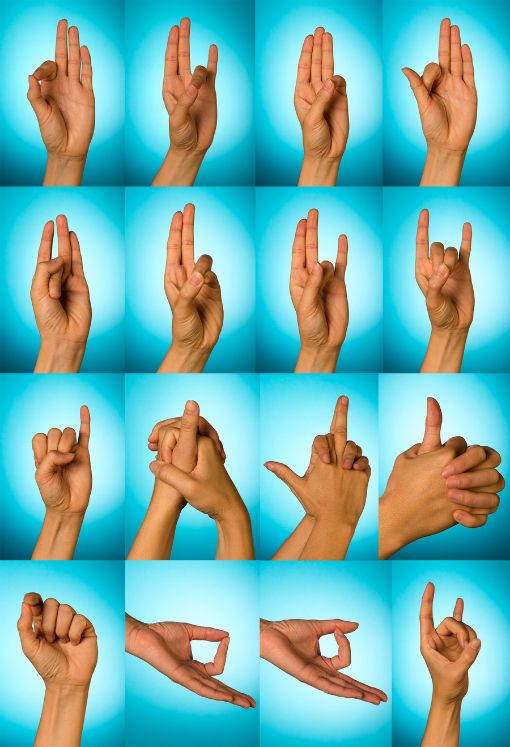
Practicing Mudras effectively involves a combination of mindfulness, intention, and proper technique. Here, we outline the steps for practicing Mudras to help you harness their benefits and integrate them into your yoga and meditation routine:
1. Choose the Right Mudra
Start by selecting the Mudra that aligns with your intentions and goals. Each Mudra serves a specific purpose, so choose one that resonates with your needs. Whether it’s stress reduction, improved concentration, or emotional balance, selecting the appropriate Mudra is essential.
2. Create a Calm Environment
Find a quiet and peaceful space where you can practice without distractions. Creating a serene environment enhances the effectiveness of Mudras by allowing you to focus inward.
3. Sit Comfortably
Assume a comfortable seated posture. You can sit on the floor with your legs crossed or on a chair with your feet flat on the ground. Ensure that your spine is straight, and your shoulders are relaxed.
4. Focus Your Mind
Before beginning the Mudra practice, take a few moments to center your mind and set a clear intention. You can close your eyes and take a few deep breaths to calm your thoughts and bring your awareness to the present moment.
5. Perform the Mudra
Follow these steps to perform the chosen Mudra:
- Hand Placement: Position your hands and fingers according to the specific Mudra’s instructions. Be precise in your hand placement to ensure the Mudra’s effectiveness.
- Relaxation: Maintain a relaxed and gentle grip. There should be no tension in your hands or fingers.
- Focus: Concentrate on the Mudra itself and its intended purpose. Visualize the energy flowing through your hands and fingers in alignment with your intention.
6. Combine with Breath Awareness
Incorporate conscious breathing into your Mudra practice. Breathe naturally and observe the rhythm of your breath. For some Mudras, specific breathing techniques may be recommended, such as deep inhalations and exhalations.
7. Practice Regularly
Consistency is key to experiencing the benefits of Mudras. Dedicate a specific time each day to practice your chosen Mudra. Start with a few minutes and gradually extend the duration as you become more comfortable.
8. Mindfulness and Patience
During the practice, maintain mindfulness and patience. Be receptive to any sensations, emotions, or thoughts that arise. Mudras may take time to yield noticeable results, so allow yourself to progress at your own pace.
9. Seek Guidance
If you’re new to Mudras or want to explore advanced practices, consider seeking guidance from a qualified yoga instructor or practitioner. They can provide personalized instruction and ensure that you are practicing Mudras correctly.
10. Adapt as Needed
As your needs and goals change, feel free to adapt your Mudra practice accordingly. You can explore different Mudras or modify your practice to suit your evolving intentions.
Remember that Mudras are a complementary practice that can enhance your overall well-being when used in conjunction with other yoga techniques. Approach Mudra practice with an open heart and a willingness to explore the profound connection between your mind, body, and spirit.
Personal Experiences and Testimonials
The effectiveness of Mudras transcends theory and research; it resonates with individuals who have experienced their transformative power firsthand. Personal accounts and testimonials from practitioners shed light on the real-life benefits of Mudras and the impact they can have on one’s well-being.
Here are some personal experiences and testimonials that highlight the profound effects of Mudra practice (Taken from comments on Fitsri various Mudras articles and Internet research):
1. Stress Relief and Inner Peace
“I was always a bit skeptical about yoga and meditation until I discovered Mudras. The Shankh Mudra became my go-to for stress relief. Just a few minutes of practice each day, and I felt a remarkable shift. My mind calmed down, and I found inner peace like never before.”
2. Improved Focus and Clarity
“As a student, I struggled with concentration during study sessions. Incorporating the Gyan Mudra into my study routine was a game-changer. It’s incredible how my ability to focus and retain information improved. Now, I use it before exams, and it really works!”
3. Emotional Balance
“After a challenging breakup, I turned to Mudras for emotional healing. Practicing the Surya Mudra helped me manage my emotions and find stability. It became an essential part of my self-care routine.”
4. Pain Management
“I live with chronic pain due to a medical condition. While Mudras aren’t a miracle cure, they have significantly complemented my pain management strategy. The Varuna Mudra, in particular, provides a sense of relief and relaxation during flare-ups.”
5. Enhanced Meditation
“Mudras took my meditation practice to a new level. The Dhyana Mudra helped me enter a deeper state of meditation. I feel more connected with my inner self, and it has become an integral part of my daily mindfulness practice.”
6. Personal Growth and Self-Awareness
“I embarked on a journey of self-discovery and personal growth. Mudras, especially the Anjali Mudra (Namaste gesture), have helped me connect with my inner wisdom and intuition. They remind me of the divinity within and guide me on my path.”
These personal experiences and testimonials highlight the versatility of Mudras and their ability to address various aspects of well-being, from stress reduction and improved concentration to emotional healing and personal growth.
Conclusion
Mudras offer a bridge between ancient wisdom and modern lifestyles, providing valuable tools for holistic well-being and self-discovery. This article has explored the rich world of Mudras, considering their traditional roots, scientific validation, influencing factors, and wide-ranging benefits.
From stress reduction to enhanced concentration and emotional balance, Mudras present a holistic approach to wellness, adaptable to individual needs.
Related FAQs
Yes, yoga mudras can be effective in maintaining health and well-being. Various scientific research and personal experience of people who practiced it proof their effectiveness. However, effectiveness varies from person to person and depends on consistent practice and alignment with personal goals.
The time it takes to see results with mudras can vary. Some people may experience immediate benefits like relaxation, while long-term effects may require consistent practice over weeks or months.
Mudras can be practiced alone, but they often complement other yoga practices like poses, meditation, and pranayama. Combining them with other techniques can enhance their effectiveness.
The number of mudras one can practice in a day varies based on individual preferences and time. Starting with one or two mudras and gradually incorporating more is a good approach.
Morning and evening are common preferred times for mudra practice. However, you can practice them at any time that suits your schedule and intention but choose what aligns with your routine.
Mudras can be a supportive tool in addiction recovery, helping manage cravings and reduce stress. However, they should complement a comprehensive strategy that may include professional guidance and treatment.
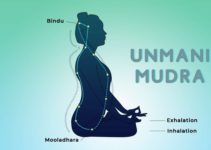
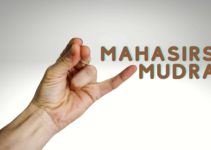
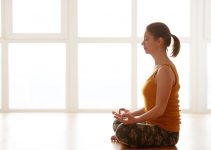


I really wish you would have links and references to these research papers on those sites. Huge downfall to calling something scientific. Show us proof! I don’t doubt it. But it would be so. Ice to see the research you had looked at to come to this conclusion.